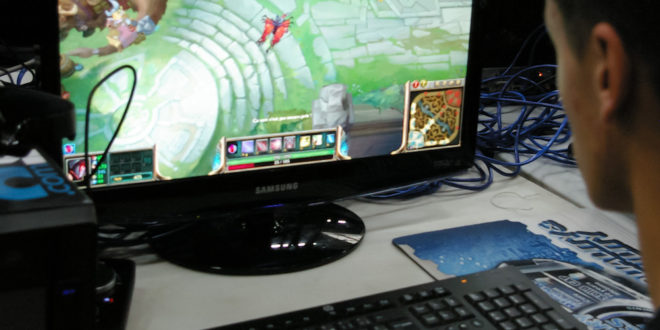PC gaming may be growing across Europe, but according to the latest figures from research firm Context, the UK is lagging behind.
While the market growth across the entirety of Europe has seen a strong growth in revenue of 22.7 per cent year-on-year, the UK is sitting at the very bottom of the growth pile at just 0.5 per cent.
To put this into context (pun intended), Russia has seen the largest amount of growth of 175 per cent year-on-year, with other major European nations such as Germany (24.2 per cent), Spain (24.5 per cent) and Sweden (14.2 per cent) all eclipsing the UK in terms of growth.
The Context PC Gaming report tracks all essential gaming products – including PCs, components, displays and accessories – across 23 European regions including Russia. It includes data from Context’s SalesWatch Distribution database, the largest ICT-distribution database of actual invoiced transactions in existence.
Part of the reason for the UK’s slowed growth may be the effect of Brexit. As a result of the country’s decision to leave the European Union – and subsequent currency valuation drops as a result of concerns about the country’s economic viability outside of the EU – many vendors, including Apple, HP and Dell have raised product prices by as much as 10 per cent.
Concerns around the UK aside, the PC gaming market is in a very healthy state across Europe, and these figures have flown in the face of a lot of doubters, said Biggles Bristol, PC Gaming and VR Consultant at Context. "Those that claim that PC Gaming is dead have been proven wrong once again. While the current generation of consoles awkwardly ‘refresh’ themselves, gaming PCs are going from strength to strength as vendors capitalise on the higher margins better specified PCs can bring."
HP and Dell in particular have benefitted from the comparatively high-margin sector, while mainstream consumers continue to favour entry-level desktops and notebooks, shrinking profits. HP’s Omen is now the number one brand for OEM systems, while both it and Dell Alienware’s share of the high-end Enthusiast and VR-Ready categories more than doubled, from 6 per cent in the first half of last year to 15 per cent in the first half of 2017.
The good news continued in the display space, where gaming monitors saw 76.8 per cent year-on-year growth in Europe driven by new curved displays and increased interest in 4K gaming. Samsung, AOC, Dell and Phillips have all been rewarded by increasing their focus on the consumer space; with triple-figure growth in Q2 2017.
Graphics cards (GPUs) are another area seeing a strong uptick in interest: sales were up 35.7 per cent year-on-year in Q2 2017, while VR-ready GPU sales soared 121 per cent over the same period, driven by interest from gamers and crypto miners.
Distributor average selling price (ASP) jumped by 27 per cent year-on-year in the period as gamers showed they were prepared to invest in powerful GPUs to boost performance.
The growth of Virtual Reality has, to this point, been held back by the high price-tag for associated hardware and a wait-and-see approach from software developers, according to Context. The ASP for a VR-ready PC with VR headset in Q2 2017 was €1840 (around £1650), while software development has been sluggish due in part to slow take-up of the technology. However, this vicious circle may soon be broken. Context consumer survey data indicates that new introductory price points around €400 (around £360) could triple the high-end VR headset market.
For full growth results across Europe, view the table below.
Source: Context PC Gaming report
 PCR Tech and IT retail, distribution and vendor news
PCR Tech and IT retail, distribution and vendor news
